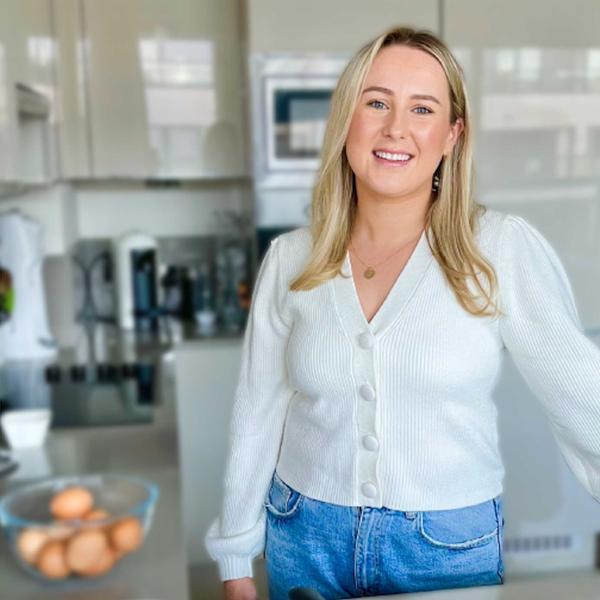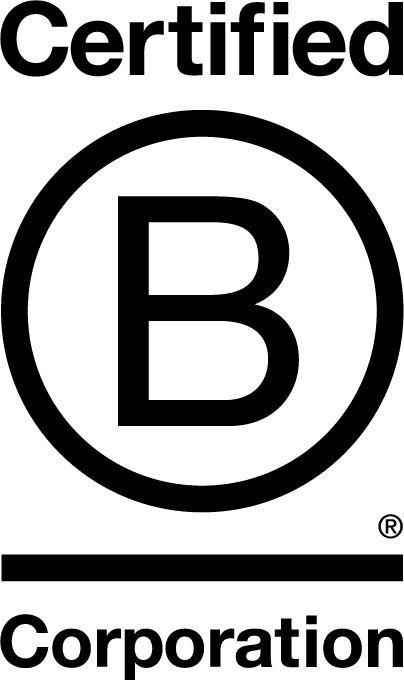The female reproductive system is truly one of nature's most sophisticated processes. The monthly cycle is incredible when you think that seven hormones work synergistically to cause four distinct processes to take place over the course of each cycle; the development of multiple follicles (follicles hold the eggs in the ovaries), ovulation (the release of an egg from the ovaries), the building of the uterine lining (in preparation for possible conception), and the shedding of that lining when conception does not occur (your period).
However, the narrative that surrounds periods and the menstrual cycle has led women to believe that their cycle is something to be embarrassed about, something that she should discretely manage herself. And unfortunately, this same narrative has perpetuated a huge lack of education which should take place at school, that leaves women less than empowered when it comes to understanding what is right for her reproductive health.
Thankfully, this narrative is slowly being changed and the taboo dismantled. Understanding what actually goes on during your menstrual cycle on a monthly basis is the first step in taking charge of your body and fertility.
The typical female menstrual cycle is on average 28 days and this is likely what you have seen referred to in textbooks if you did cover the female reproductive system in school. However, we now know that a healthy female cycle can be anywhere from 21 - 35 days, the main thing is that it is ‘normal’ for you, i.e. it is usually always around the same length each month. For the purpose of explaining the different phases I will use the textbook 28 days as an example. In this instance, most women will ovulate (release an egg on day 14). This egg will survive for 12-24 hours and waits to be fertilised - this is the only time you can actually get pregnant. However, sperm will survive for up to 5 days inside the female body. So your fertile window is actually about 5-6 days long.
Hormones + Your Cycle
For females, oestrogen and progesterone are the two predominant hormones that fluctuate over the course of the menstrual cycle and ultimately determine why you feel completely different on day 4 of your cycle compared to day 14! Understanding the physiology of what happens over the course of your 28 day cycle is a powerful tool that you can use to your advantage, for example when planning what type of training you are doing at different stages of your cycle. Your menstrual cycle is a powerful indicator of health and your body’s way of letting you know if there’s something just not right! The menstrual cycle is such an important indication of female health that it is now considered to be the ‘fifth vital sign of health’ for women by the American College of Obstetricians and Gynecologists.
The best way to get on the road to understanding your cycle is to track it, every woman's cycle is completely unique and hence you may feel totally different to how your sister or your best friend does during her cycle. There are lots of brilliant apps available to help you track your cycle, most of them also allow you to record any symptoms you may be feeling throughout your cycle such as cramps, tiredness or poor sleep. Clue, Flo, Eve and Fitrwomen are some of the best ones, pick whichever one suits you best. When it comes to your menstrual cycle, knowledge is power and the more in tune you become with it, the more you will be able to leverage it and put strategies in place to help combat any unwanted premenstrual symptoms (PMS) you may be experiencing.
Exercise, Nutrition + Your Cycle
We all know that there are times throughout our menstrual cycle that we just feel a bit ‘bleughh’ and others where we are feeling like superwoman! There’s good science to explain why everything from your mood, to cravings, to your performance in the gym varies over the course of the month - and it’s all down to our female hormones; oestrogen & progesterone.
It’s worth noting that if you are on any form of hormonal contraception such as the pill, bar or the patch, your natural hormones are temporarily switched off from cycling and you will not experience the hormonal fluctuations outlined below.
Let's have a good look at what’s going on over the course of the month;

Phase 1: Menstruation/ Bleed (Day 1-5)
Your cycle begins on day 1 of your period and lasts approximately 5 days (if you have spotting in the lead up to your bleed these days do not count as menstruation, this is the end of your previous cycle or simply some discharge (which is very normal) ahead of your actual period starting). Oestrogen and progesterone are at their lowest and for this reason you may notice a drop in your overall mood. The drop in hormones is what stimulates the shedding of the uterine lining (your period).
Some women feel menstrual cycle symptoms such as cramps and bloating. Feeling fatigued in this phase is very normal so it’s important to listen to your body and only do what feels comfortable from a training perspective. Research has shown that white cell count is lower in this phase of your cycle - to compensate for this, aim to fuel your body with nutrient dense foods, reduce refined sugar and prioritise sleep to reduce risk of illness or injury.
From a nutrition perspective, women have a heightened sensitivity to insulin in the first half of their cycle (day 1 - 14) meaning that they have an increased ability to to utilise carbohydrates as fuel. Have you ever noticed that you crave carbohydrate rich foods during your period? Or chocolate specifically? Well, it’s not in your head, this is your body’s way of asking you to fuel it with carbohydrates! Recent research has also been able to link chocolate cravings to your body’s desire for magnesium-rich foods! Dark chocolate is an excellent source of magnesium - so don’t fight it, allow yourself a few squares! Try and opt for good quality dark chocolate that has a cacao content of at least 70%. During menstruation your body actually needs approximately 150 additional calories than usual - this is the reason for most women’s increased appetite around this time. It is also beneficial to include some iron rich foods such as red meat at this time in your cycle to replenish any lost during menstruation.
Phase 2: Follicular (Day 6 - 13)
This is still the low hormone phase however, oestrogen continues to rise over the course of this phase until it reaches its peak at ovulation (day 14). Increasing oestrogen levels are associated with a release of feel-good hormones so you should notice your mood being more energetic and positive in this phase! Oestrogen is an anabolic hormone meaning high oestrogen levels are conducive to building lean muscle. Research demonstrates the benefit of including the majority of strength and high-impact cardiovascular training in this phase as we are much more capable of hitting high intensities during this time in the cycle. In a recent study participants who performed most of their strength training in the follicular phase and significantly fewer strength sessions in the luteal phase had higher lean body-mass compared to the female participants who performed the majority of strength training in the luteal phase. Women also have a heightened ability to recover from intense sessions in the follicular phase. So, if strength training and HIIT is the type of exercise you enjoy, now is your time to take full advantage of that!
Similar to during menstruation, carbohydrates are the preferred fuel source in the follicular phase. Opt for good quality complex carbohydrates such as potatoes, brown rice and wholegrains. Females have a shorter recovery window than males; try to get ~25g of highly bioavailable protein on board as soon as possible after training; greek yoghurt and whey protein are great options to have on hand post-workout.
Phase 3: Ovulation (day 14 - 18)
Ovulation itself typically happens around day 14 but the characteristics of the phase are true for approximately 3 days. Ovulation is the release of an egg from the ovaries.
Ovulation is the most important part of the female cycle, regardless of whether you are trying to conceive or not. This is something that often surprises women as most believe our cycle is all about our period but that’s actually not the case! Ovulation is the way our body produces progesterone. Progesterone balances oestrogen and has a calming, anti-anxiety effect on the body, alongside an array of other health benefits from bone, skin and heart health.
Oestrogen levels start to decline after ovulation occurs but then both oestrogen and progesterone start to rise and remain high for the duration of the cycle. Basal body temperature rises after ovulation, this is one of the key indicators that ovulation has occurred. Ovulation can be tracked in a number of different ways, one of which is by tracking your basal body temperature first thing in the morning as ovulation increases your core body temperature by approximately half a degree (celcius), this increase in body temperature remains for the duration of your cycle while progesterone is heightened (the luteal phase).Testosterone is also at its highest during ovulation resulting in a higher sex drive.
Most women feel energetic and confident around the time of ovulation but sometimes the change in hormone levels can impact mood and some women start to feel more lethargic. All types of training are good in this phase. If energy levels drop, lower-impact exercise such as pilates, flexibility work and light jogging are very beneficial. Exercise has been shown to have an anti-inflammatory effect on the body which has a positive impact on PMS that can start to present in the run up to menstruation.
From a nutrition perspective, fat takes over at this point in the cycle as the preferred fuel source and blood sugar levels are more likely to be unstable. It is important to include good quality protein sources at every meal to help keep blood sugars balanced. New research shows that the current protein guideline of 0.8g per kg of body weight is too low for females, with requirements actually being closer to 2-2.2g per kg of body weight. Adequate protein intake is of key importance for women at every life stage from adolescence to menopause.
Phase 4: Luteal Phase (day 19-28)
Oestrogen & progesterone remain high for the duration of the luteal phase and then begin to decline in the lead up to menstruation. The decrease in hormone levels can impact your ability to get quality sleep, your basal body temperature is also raised which can negatively affect sleep.
When it comes to training in the luteal phase it is important to listen to how your body is feeling as some women can feel ‘flatter’ and more fatigued at this point in the cycle - instead of forcing yourself to make that gym class try opting for lower-impact forms of exercise such as walking, pilates and yoga. The decreased hormone levels trigger an inflammatory response in the body, for this reason it is good to avoid intense cardio and resistance training as this places additional stress on the body. Lower-impact exercise as mentioned above are effective ways of keeping cortisol levels in the body low (high cortisol levels trigger fat storage - not what we want!). Progesterone is also a catabolic hormone that interferes with our ability to build muscle and recover in this phase so this should also be considered when choosing your workouts in the luteal phase.
Focus on regularly fueling your body with balanced meals that include; complex carbohydrates, healthy fats such as eggs, avocados and nuts and protein to help keep blood sugars balanced and cravings at bay. Eating foods rich in vitamin D, magnesium, zinc and fish oils have been shown to help PMS - nuts, seeds, salmon, dark green leafy veg and dairy.
So, What are the Take Home Messages?
It’s incredibly empowering to understand what’s happening in your body over the course of your cycle and know why you feel completely different from one end of the month to the other. You will reap the benefits of learning how to work with your hormones to support your female biology. The impact of which will be visible in so many aspects of your life, from; your training and performance, to your energy levels on a daily basis, to the way you are able to manage stress.
Your monthly cycle is an incredible indicator of health and your body’s way of letting you know if there’s something out of sync. It’s so important that the American College of Obstetricians and Gynaecologists states that menstruation is the ‘fifth vital sign of health’, next to the four other key indicators; pulse, body temperature, breathing rate and blood pressure.
Take the time to learn about your own personal cycle, begin to track it and take note of how you are feeling and tailor your training accordingly. Some of my favourite tracking apps are Eve, Flo, CLue and FitrWoman - Natural Cycles is a fantastic option for anyone who is looking for a non-hormonal contraceptive option (the code ‘OneHealth’ will get you 20% off). Try and change your perspective, instead of looking at your cycle as something you have to ‘deal with’ every month, learn to leverage your female hormones and make them work for you!
If you are interested in learning more about this topic, below is a list of resources from women such as Dr. Hazel Wallace, Lara Briden, Alisa Vitti and Dr. Stacy Sims who are doing incredible work in the female health space;
- Book: ‘ROAR’ by Dr. Stacy Sims
- Book: ‘In the Flo’ by Alisa Vitti
- Book: ‘Period Repair Manual’ by Lara Briden
- Podcast: ‘Train like a girl’ - Part 1v& Part 2: Leanne Ward Nutrition ft. Dr. Stacy Sims
- Podcast: ‘#94: Unlock your hormonal advantage by harnessing the power of your infradian rhythm with Alisa Vitti’ - Broken Brain Podcast with Dhru Purohit
- Podcast: The Food Medic - S1 E9 - Periods, Fertility + the Menopause’ (Dr. Hazel Wallace & The @gynageek)
About the author:
Jennie, founder of One Health, is a registered nutritionist who specialises in all things female health. Jennie works closely with clients who are experiencing a variety of hormonal and fertility challenges and empowers women to understand their menstrual cycle and how they can work with it and not against it!
Jennie is a wealth of knowledge when it comes to all things hormonal health, fertility and nutrition.



